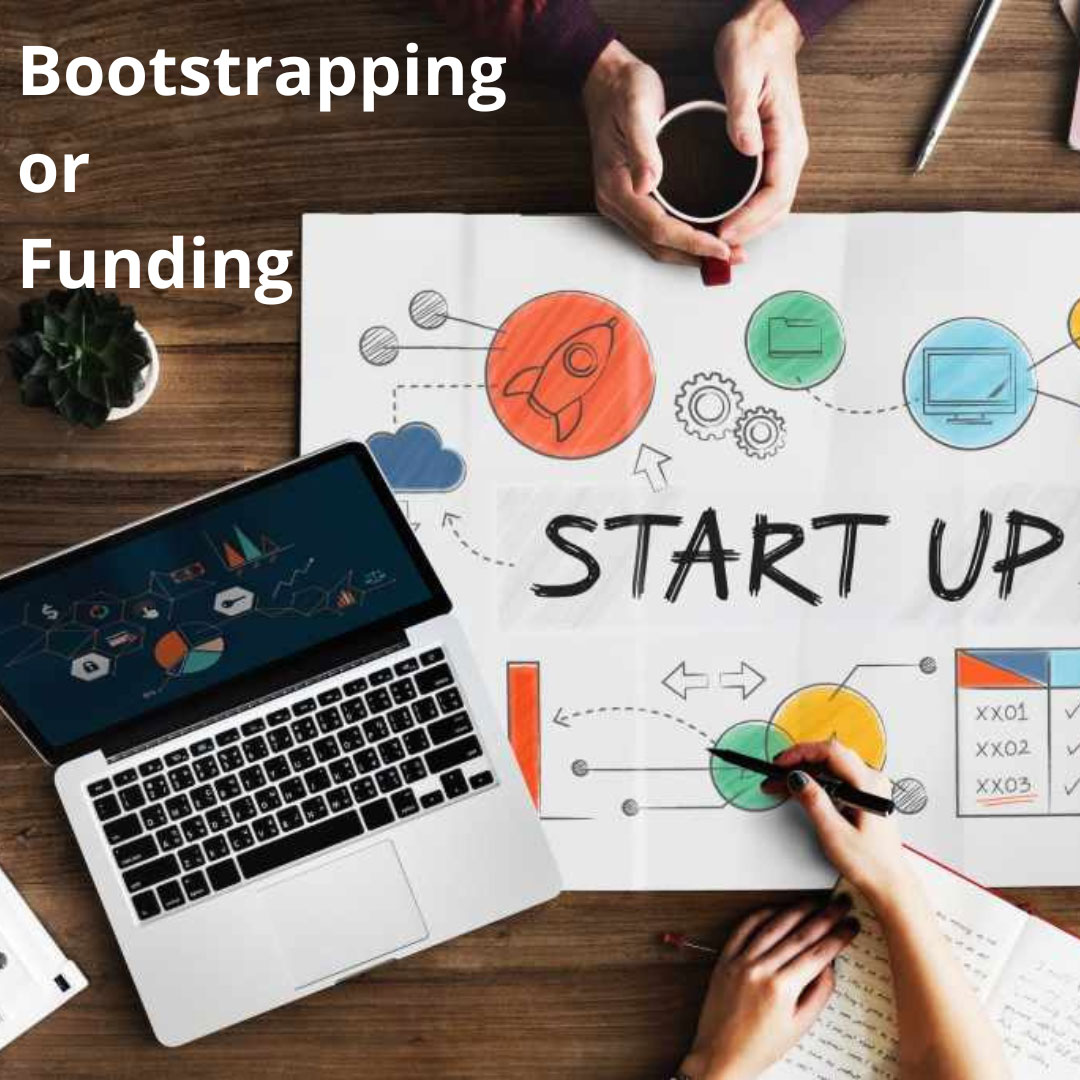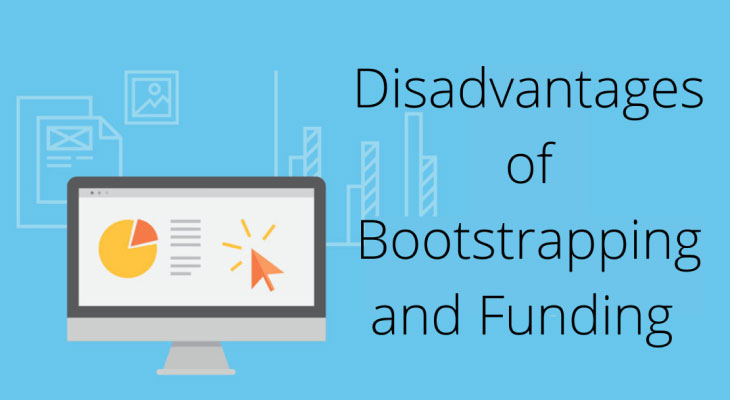
Bootstrapping is known as the process of starting or building a business or a startup from scratch without attracting investment. It can also be put in other words as starting a business with minimal external capital. It is a way to finance small businesses by buying and using resources with the finances of the owner only and without sharing equity or borrowing sums of money from the bank.
There are three stages of bootstrapping :

- The beginning stage is where one starts a business along the goal of building it with his or her own money. This is where the process falls at the owner’s expense. The startup begins with the personal funds of the owner or minimal funds borrowed by friends or family.
- The next stage is the customer funded stage where the startup has established and flourished enough on the personal funded foundation, that it is now run by the funds that are acquired through the customers in the form of sales made. The money from the customers and the clients is used to operate the startup and to fund the business’ growth.
- Finally, comes the credit stage where the business looks for innovative ways to get funds, usually by focusing on specific activities of funding, that is upgrading equipment and hiring new staff. At this age, the business also looks for expansion as it moves towards taking a loan from the bank or leans towards venture capitalists for growth of the startup.
If you are wondering the reason behind the choice of bootstrapping by various startup owners? Here’s why!
As reliable as it may seem like to have a backup cushion of funds to fall back on at a low point during the startup journey, it is not always true. Bootstrapping provides a certain level of pressure that funding does not as bootstrapping is building a business without the help of outside capital.
- People that bootstrap have the freedom of being accountable to no one else bit themselves as the money invested is totally owned by them. They are driven by their own passion towards doing what the like so the attract a similar crowd of people who bootstrap too, so there becomes a shared culture of values.
- They have a pressure to keep tabs on their cash flow as they do not have a safety net of investor funds. They must value every dollar that comes in and goes out because the business won’t see growth if it does not reach the sales target. They must stay in complete control of the finances in order to keep the business running in a financially healthy manner.
- This manner of starting a business gives it the leverage of starting small and establishing it until it reaches a certain level of growth that is valuable, so when it reaches a tipping point, it attracts funds from investors.

Now coming to Funding, it is the money or the capital required to start and run a startup. It is the amount collected in the form of investments from family and friends or venture capitalists, angel investors and accelerators. When an entrepreneur plans on getting investments for his startup, he needs to go all in if he is to convince others to invest in his company.
This fund is collected as sums of money as pre – seed funding, seed funding and funding for the expansion of an established startup.
Funding works hand in hand with a well planned idea as it attracts investors only when the startup seems to offer a great growth.
- Startups make an active choice in leaning towards funding because of the need of having financial backup during the start of a business till it gets stable. Although some entrepreneurs rely on self funding, it poses the risk of the personal funds not being enough when the demands are larger than what the firm can afford.
- Funding serves better to maintain the financial health of a firm as it is a must to have enough funding for a startup to function. Companies go in for external funding to acquire their work goals.
- Funding also acts as a safety net for when the business runs on an on and off course, it is reliable to fall back on and use the funds when the company needs to recover from a loss.
- Having enough funding can be helpful for the firm to grab opportunities in expanding their work lifestyle, in terms of buying more equipment or hiring new staff, buying assets and machinery.
Disadvantages of Bootstrapping and Funding :

:
The cons of bootstrapping or self funding are as follows :
- The first and foremost disadvantage is the financial risk. As the whole weight of the finance of the business depends on the owner, if and when the business goes into loss or takes a hit, the owner directly faces the impact. It may affect the owner’s personal life as well if he or she has gone all out with the money. There is always the risk of running out of cash or the flow being stagnant.
- With bootstrapping comes another disadvantage of having less credibility as the owner is on his own in the huge field of startups. It becomes harder to find and make connections and ones that last. There will be enough time consumption to form a consumer base and to attract consumers so as to further create and expand the network.
- The growth of the firm is relatively slow when compared to the growth of startups that function on external funds. There may only be enough funds for the firm to function minimally. It may not be in a position of expansion due to a limited fund because it will not be able to take up high demands.
For a externally funded startup, here are the disadvantages :
- Getting investors to invest in your startup brings a disadvantage of having to give up some part of the ownership of the company. Investors ask for a part of ownership in return for the funds they provide, the owner loses the total ownership of the firm.
- Funding in most cases also requires the owner to pay back the loan or the total fund that he or she collected with an amount of interest. The company needs to generate enough cash flow to pay back the money with interest which can become difficult in terms of success.
- Gathering investors and funds in itself becomes a huge role that can be very time consuming and stressful for the entrepreneurs. Setting up a network, expansion of it and pitching the idea and showing the success rate can be effort and time consuming. Even that does not guarantee that the owner will get the funds that he or she is seeking.
In conclusion, the decision of whether to bootstrap or raise funding depends on the knowledge, the influence, the goal plan, planned success rate, available funds and resources.
There is no particular way to choose either bootstrapping or funding but it is important to be aware of the fact that an entrepreneur does not have to rely on bootstrapping forever and that he or she can always choose to raise funds as the business grows.








